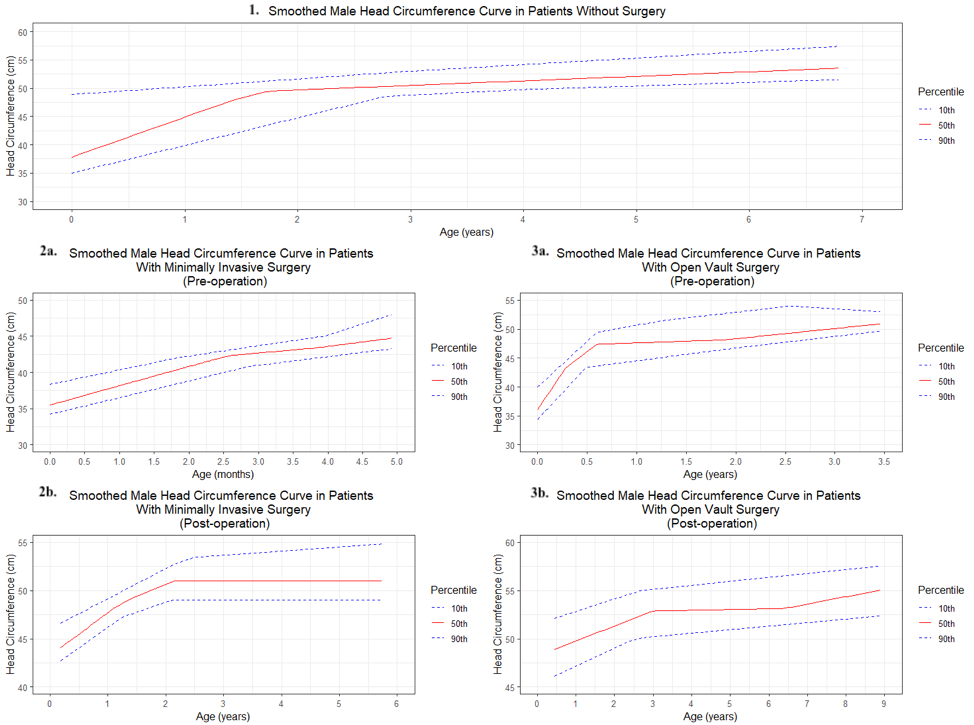Establishing the Pediatric Head Circumference Growth Curve for Patients with Sagittal Craniosynostosis
Casey Zhang*1, Joseph W. Mocharnuk1, Jeffrey Chen1, Justin Beiriger1, Joseph Losee2, Jesse Goldstein2
1University of Pittsburgh, Pittsburgh, PA; 2University of Pittsburgh Medical Center, Pittsburgh, PA
Serial measurement of head circumference is an integral part of pediatric care and is important for diagnosing conditions that result in head shape abnormalities, such as sagittal craniosynostosis, which is the most common form of craniosynostosis. The importance of monitoring head circumference growth curves in healthy patients is widely known; however, there exists no comparable metric for patients with sagittal synostosis. The purpose of our study was to generate standardized, validated growth-curves for patients diagnosed with isolated sagittal craniosynostosis. Secondarily, we sought to stratify growth by different treatment approaches.
A total of 241 patients diagnosed and treated for isolated sagittal craniosynostosis at our institution between 2004-2022 were analyzed. Smoothed, LOESS non-parametric curves were estimated preoperatively and postoperatively to compare patient age to head circumference. The postoperative growth curves were further stratified into three groups by treatment approach: Group 1 (no surgery), Group 2 (minimally invasive surgery), and Group 3 (open vault surgery). Analysis was conducted using RStudio (Version 1.3).
Among the patients who met inclusion criteria, 76.8% were male. The majority of patients were Caucasian (79.7%). 39.8% of patients were managed non-surgically, 35.3% with minimally invasive endoscopic surgery, and 24.9% with open cranial vault reconstruction. Average age at surgery for Group 2 was 5.5 months. Average age at surgery for Group 3 was 2.8 years. Optimal curve smoothing required restricting the age ranges for growth tracking to attenuate the effect of outlier patients:: 0-7 years for Group 1, 0-5.75 years for Group 2, and 0-3.5 years for Group 3.
Our study represents the first attempt to create a “well-child” growth curve for children diagnosed and treated for isolated sagittal craniosynostosis. Our efforts yielded comprehensive, smoothed curves illustrating growth trends over time and across treatment approaches.

Smoothed male circumference head curves in patients without surgery (1), with minimally invasive endoscopic surgery (2), and with open vault surgery (3).
Back to 2023 Posters


